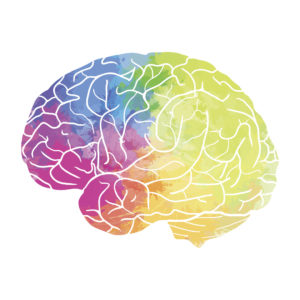How Good Habits Can Improve your Workplace Relationships
There I was in work meeting, talking too much and not being clear. My colleague had said something. I disagreed in a way that antagonized him. He got tense and defensive. My response wasn’t gracious. We felt locked in battle, over-talking, and not listening. In retrospect, it was obvious to me: I was tired and anxious, which made me impatient and sloppy. Now I’m learning more about my brain so that I can avoid messy interactions like this and improve my workplace relationships.

The Science
In fact, knowing how the human brain works, these situations should come as no surprise. The prefrontal cortex, which is the conscious processor located in the front of your brain, requires a lot of energy to operate.
A particular section of the prefrontal cortex — the ventrolateral prefrontal cortex (VLPFC) — is dedicated to inhibition, that ability to stop yourself from doing something you don’t want to do. It’s the brain’s primary restraint mechanism, and it enables you to focus, be careful, and operate with intention. And it only performs well under optimal conditions.
David Rock explains further in his wonderful book Your Brain at Work:
Our braking system (the VLPFC) is part of the most fragile, temperamental, and energy-hungry region of the brain. Because of this, your braking system works at its best only every now and then. If cars were built like this, you’d never survive your first drive to the store. All this makes sense when you consider it: stopping yourself from acting on an urge is something you can do sometimes, but is often not that easy….
It’s starting to become clear why, when you’re tired, hungry, or anxious, it’s easier to make mistakes and harder to inhibit the wrong impulses.
How Routine Frees Up the Brain
According to neuroscientists, the two best ways to keep the VLPFC strong are: 1) not having to use it as often, and 2) staying rested, nourished, and calm. To accomplish these two objectives, look to another region of the brain: the basal ganglia. Here’s what Rock says about this region:
The basal ganglia are four masses in the brain region driving routine activities that don’t require a lot of active mental attention…. They are also highly energy efficient, with fewer overall limitations than the prefrontal cortex. As soon as you repeat an activity even just a few times, the basal ganglia start to take over. The basal ganglia, and many other brain regions, function beneath conscious awareness.
In other words, the more you can relegate choices to the basal ganglia, the more energy you’ll have left over for the VLPFC to inhibit the wrong responses. This is why healthy patterns and routines can be so helpful. Whether it’s a productive pattern for responding to arguments, running meetings, or managing your daily chores, routines limit the use of the VLPFC and keep you calm.
Develop Meaningful Routines and Patterns
With this in mind, in recent years, I’ve committed myself to routines and patterns that reflect my values and desired outcomes. For instance, here’s my morning schedule:
Weekdays my alarm goes off at 4:45 AM. I step through morning rituals: clothes, teeth, reading, prayer, exercise, breakfast, dishwasher, kids, news. Each is thoughtful, but none requires a decision. Clothes picked out the night before. Reading pre-determined. Prayer in the same spot. Exercise already planned. Same food every morning. Kids have a process. Same news sources. Occasionally, I’ll change it up to accommodate other needs, but it’s generally set.
I’ve found that too much deviation from this pattern has two consequences. First, I risk being more hungry, tired, and anxious. Second, I have to make a new set of decisions to replace my routine, and that drains my prefrontal cortex. Routine may be boring, but it’s freeing.
But be careful. If taken to the extreme, routines and patterns can be counterproductive. Keep in mind:
- It’s not about you. It’s about others. Patterns and routines can quickly become self-centered agendas to remain comfortable. Constantly remind yourself of the purpose of the pattern: to work better with others and have more capacity for difficult situations.
- You are a human being, not a human doing. Patterns and routines can also become an obsessive exercise in checking boxes. This leads to valuing yourself by what you do more than who you are. Remember who and what you are. You’re not a robot, so if the routine is depleting you and your attitude is suffering, change it up.
- Outcomes are more important than methods. Patterns and routines are not the aim. They are the approach. If you’re not hitting the target, change the approach. Exercise, prayer, meditation, breakfast, sleep, and reading the news are only valuable to the extent that they progress you toward your purpose. Change the methods if they don’t.
The VLPFC is fragile and temperamental. The basal ganglia is strong and resilient. If you want to get better at dealing with people and difficult situations, put your basal ganglia to work with routines and patterns, and use the VLPFC sparingly for the most critical inhibitions.
How can you optimize your brain for what matters most?










Comments are closed here.